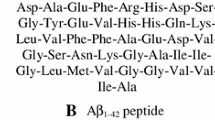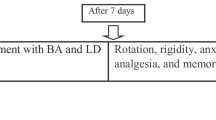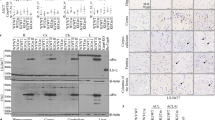Abstract
Background
Tramadol (TRA) is an analgesic prescribed for treating mild to moderate pains, the abuse of which has increased in recent years. Chronic tramadol consumption produces neurotoxicity, although the mechanisms are unclear. The present study investigated the involvement of apoptosis and autophagy signaling pathways and the mitochondrial system in TRA-induced neurotoxicity.
Materials and methods
Sixty adult male Wistar rats were divided into five groups that received standard saline or TRA in doses of 25, 50, 75, 100, or 150 mg/kg intraperitoneally for 21 days. On the 22nd day, the Open Field Test (OFT) was conducted. Jun N-Terminal Kinase (JNK), B-cell lymphoma-2 (Bcl-2), Beclin1, and Bcl-2-like protein 4 (Bax) proteins and tumor necrosis factor α (TNF-α) and interleukin 1β (IL-1β) were measured in rat hippocampal tissue.
Results
TRA at doses 75, 100, and 150 mg/kg caused locomotor dysfunction in rats and increased total and phosphorylated forms of JNK and Beclin-1, Bax, and Caspase-3. TRA at the three higher doses also increased the phosphorylated (inactive) form of Bcl-2 level while decreasing the unphosphorylated (active) form of Bcl-2. Similarly, the protein levels of TNF-α and IL-1β were increased dose-dependently. The mitochondrial respiratory chain enzymes were reduced at the three higher doses of TRA.
Conclusion
TRA activated apoptosis and autophagy via modulation of TNF-α or IL-1β/JNK/Bcl-2/Beclin1 and Bcl-2/Bax signaling pathways and dysfunction of mitochondrial respiratory chain enzymes.




Similar content being viewed by others
Data Availability
The datasets are available from the corresponding author upon reasonable request.
Abbreviations
- Akt :
-
Protein kinase B (PKB)
- ANOVA :
-
Analysis of variances
- Bax :
-
Bcl-2-like protein 4
- Bcl-2 :
-
B-cell lymphoma-2
- BSA :
-
Bovine serum albumin
- EGTA :
-
ethylene glycol tetra-acetic acid
- EPM :
-
Elevated Plus Maze
- GSSG :
-
Glutathione in oxidized form
- ELISA :
-
enzyme-linked immunosorbent assay
- EPM :
-
Elevated Plus Maze
- FAAD :
-
Fas Associated Via Death Domain
- FAS :
-
Fas cell surface death receptor
- FST :
-
Forced Swim Test
- GSH :
-
reducing type of glutathione
- HPLC :
-
High-performance liquid chromatography
- H 2 SO 4 :
-
Sulphoric Acid
- IHC :
-
Immunohistochemistry
- IL-1β :
-
interleukin 1 beta
- iNOS :
-
inducible nitric oxide synthase
- JNKs :
-
c-Jun N-terminal kinases
- MAPK :
-
Mitogen-activated protein kinase
- MDA :
-
Malondialdehyde
- MgCl2 :
-
magnesium chloride
- MPO :
-
Myeloperoxidase
- mTOR :
-
Mammalian target of rapamycin
- NaCl :
-
Sodium Chloride
- NADPH :
-
nicotinamide adenine dinucleotide phosphate
- NaH2PO4 :
-
Sodium dihydrogen phosphate
- NF-κB :
-
nuclear factor kappa B
- NO :
-
Nitric Oxide
- NOAEL :
-
No Observed Adverse Effect Level
- OFT :
-
Open Field Test
- PC :
-
personal computer
- ROS :
-
Reactive Oxygen Species
- SEM :
-
Standard error of the mean
- TMB substrate :
-
3,3’,5,5’-Tetramethyl –benzidine
- TNF-α :
-
tumor necrosis factor alpha
- TRAIL/Apo2L :
-
Tumor necrosis factor-related apoptosis-inducing ligand
- TRA :
-
Tramadol
- TST :
-
Tail Suspension Test
- UVRAG :
-
UV radiation resistance-related gene
- WB :
-
Western blotting
References
Kamranian H et al (2023) (just-accepted) Neuroprotective potential of Trimetazidine against tramadol-induced neurotoxicity: role of PI3K/Akt/mTOR signaling pathways Toxicology Mechanisms and Methods, p. 1–50
Dunn KE et al (2019) A systematic review of laboratory evidence for the abuse potential of tramadol in humans. Front Psychiatry 10:704
Ezi S et al (2021) Chronic exposure to Tramadol induces neurodegeneration in the Cerebellum of Adult Male rats. Neurotox Res 39(4):1134–1147
Mohamed HM, Mahmoud AM (2019) Chronic exposure to the opioid tramadol induces oxidative damage, inflammation and apoptosis, and alters cerebral monoamine neurotransmitters in rats. Biomed Pharmacother 110:239–247
Soltani R et al (2020) Tramadol exposure upregulated apoptosis, inflammation and autophagy in PC12 cells and rat’s striatum: an in vitro-in vivo approach. J Chem Neuroanat 109:101820
Mehdizadeh H et al (2017) Mitochondrial impairments contribute to spatial learning and memory dysfunction induced by chronic tramadol administration in rat: protective effect of physical exercise. Prog Neuropsychopharmacol Biol Psychiatry 79:426–433
Sarhan NR, Taalab YM (2018) Oxidative stress/PERK/apoptotic pathways interaction contribute to tramadol neurotoxicity in rat cerebral and cerebellar cortex and thyme enhances the antioxidant defense system: histological, immunohistochemical and ultrastructural study. Int J 4(6):124
Samadi M et al (2021) Caffeine attenuates seizure and brain mitochondrial disruption induced by Tramadol: the role of adenosinergic pathway. Drug Chem Toxicol 44(6):613–619
Hussein SA, Abdel Aal SAL (2017) Neurodegeneration and oxidative stress induced by tramadol administration in male rats: the effect of its withdrawal. Benha Veterinary Medical Journal 33(2):149–159
Al-Mashhadane FA, Ismail HK, Al-Saidya A (2019) Histopathological effects of chronic use of tramadol on liver and kidney in sheep model. J Pharm Sci Res 11(6):2208–2212
Okouchi M et al (2007) Neuronal apoptosis in neurodegeneration. Antioxid Redox Signal 9(8):1059–1096
Graeber MB, Moran LB (2002) Mechanisms of cell death in neurodegenerative diseases: fashion, fiction, and facts. Brain Pathol 12(3):385–390
Ali HA et al (2020) Neurotoxic, hepatotoxic and nephrotoxic effects of tramadol administration in rats. J Mol Neurosci 70:1934–1942
Aghajanpour F et al (2020) Tramadol: a potential neurotoxic agent affecting prefrontal cortices in adult male rats and PC-12 cell line. Neurotox Res 38:385–397
Strasser A, O’Connor L, Dixit VM (2000) Apoptosis signaling. Annu Rev Biochem 69(1):217–245
Salehi E et al (2021) Curcumin can be Acts as effective agent for Prevent or Treatment of Alcohol-induced toxicity in hepatocytes: an Illustrated mechanistic review. Iran J Pharm Research: IJPR 20(1):418
Huang J, Lam GY, Brumell JH (2011) Autophagy signaling through reactive oxygen species. Antioxid Redox Signal 14(11):2215–2231
Meijer AJ et al (2015) Regulation of autophagy by amino acids and MTOR-dependent signal transduction. Amino Acids 47:2037–2063
Fairlie WD, Tran S, Lee EF (2020) Crosstalk between apoptosis and autophagy signaling pathways. Int Rev cell Mol biology 352:115–158
Codogno P, Meijer AJ (2005) Autophagy and signaling: their role in cell survival and cell death. Cell Death & Differentiation 12(2):1509–1518
He C, Klionsky DJ (2009) Regulation mechanisms and signaling pathways of autophagy. Annu Rev Genet 43:67–93
Zhang S et al (2016) Neuroprotective effects of β-asarone against 6-hydroxy dopamine-induced parkinsonism via JNK/Bcl-2/Beclin-1 pathway. Mol Neurobiol 53(1):83–94
Hetz CA (2007) ER stress signaling and the BCL-2 family of proteins: from adaptation to irreversible cellular damage. Antioxid Redox Signal 9(12):2345–2356
Chitnis T, Weiner HL (2017) CNS inflammation and neurodegeneration. J Clin Investig 127(10):3577–3587
Dhanasekaran DN, Reddy EP (2008) JNK signaling in apoptosis. Oncogene 27(48):6245–6251
Kandezi N et al (2020) Preventive properties of ramelteon against cocaine-induced autophagia and apoptosis: A hypothetic role of TNF-α receptor involvement and JNK/Bcl-2-Beclin1 or Bcl-2/Bax signaling pathway. Medknow
Sepehr A et al (2020) Minocycline may be useful to prevent or treat methamphetamine-induced neural cell death: hypothetic role of autophagia and apoptosis signaling pathway. Adv Biomedical Res 2020(February):1–2
Gump JM, Thorburn A (2011) Autophagy and apoptosis: what is the connection? Trends Cell Biol 21(7):387–392
Mukhopadhyay S et al (2014) Autophagy and apoptosis: where do they meet? Apoptosis 19:555–566
Atici S et al (2004) Opioid neurotoxicity: comparison of morphine and tramadol in an experimental rat model. Int J Neurosci 114(8):1001–1011
Nafea OE et al (2016) A study of the neurotoxic effects of tramadol and cannabis in adolescent male albino rats. Sci Rep 2:143–154
Mowaad NA, El-Shamarka ME, Khadrawy YA (2022) The behavioral and neurochemical changes induced by boldenone and/or tramadol in adult male rats. Neurochem Res, p. 1–14
El-Gaafarawi II (2006) Biochemical toxicity induced by tramadol administration in male rats. Egypt J Hosp Med 23(1):353–362
Gould TD, Dao DT, Kovacsics CE (2009) The open field test, in Mood and anxiety related phenotypes in mice. Springer, pp 1–20
Ghafarimoghadam M et al (2022) A review of behavioral methods for the evaluation of cognitive performance in animal models: current techniques and links to human cognition. Physiol Behav 244:113652
Zarate SC et al (2017) Hormone deprivation alters mitochondrial function and lipid profile in the hippocampus
Yu H et al (2018) Mitochondrial molecular abnormalities revealed by proteomic analysis of hippocampal organelles of mice triple transgenic for Alzheimer disease. Front Mol Neurosci 11:74
Shah K, Maghsoudlou P (2016) Enzyme-linked immunosorbent assay (ELISA): the basics. Br J Hosp Med 77(7):C98–C101
Konstantinou GN (2017) Enzyme-linked immunosorbent assay (ELISA), in Food Allergens. Springer, pp 79–94
Oh S-h et al (2017) Comparisons of ELISA and Western blot assays for detection of autophagy flux. Data in brief 13:696–699
Stark AM et al (2007) p53, BCL-2 and BAX in non-small cell lung cancer brain metastases: a comparison of real-time RT-PCR, ELISA and immunohistochemical techniques. Neurol Res 29(5):435–440
Lequin RM (2005) Enzyme immunoassay (EIA)/enzyme-linked immunosorbent assay (ELISA). Clin Chem 51(12):2415–2418
Kirby DM et al (2007) Biochemical assays of respiratory chain complex activity. Methods Cell Biol 80:93–119
Bénit P et al (2006) Three spectrophotometric assays for the measurement of the five respiratory chain complexes in minuscule biological samples. Clin Chim Acta 374(1–2):81–86
Alemán-Laporte J et al (2022) Effect of the analgesics dipyrone, tramadol, and meloxicam on the behavior of laboratory rats. J Veterinary Behav 57:24–30
Antiorio ATFB et al (2022) Assessment of general activity and anxiety-like behavior in mice following tramadol and meloxicam administration for managing immediate post-operative pain. Biol Models Res Technol 2(1):0–0
Szkutnik-Fiedler D et al (2012) Concomitant use of tramadol and venlafaxine—evaluation of antidepressant-like activity and other behavioral effects in rats. Pharmacol Rep 64(6):1350–1358
Symeon I et al (2017) Evaluation of the effects of tramadol on analgesic response and locomotor activity on two different strains of laboratory mice. J Hellenic Veterinary Med Soc 68(1):89–96
Yang C et al (2012) Tramadol pretreatment enhances ketamine-induced antidepressant effects and increases mammalian target of rapamycin in rat hippocampus and prefrontal cortex BioMed Research International, 2012
Ubale Vishal M et al (2015) V.M.,., Evaluation of antidepressant activity of tramadol in mice: an experimental study
Abdel-Zaher AO, Abdel-Rahman MS, ELwasei FM (2011) Protective effect of Nigella sativa oil against tramadol-induced tolerance and dependence in mice: role of nitric oxide and oxidative stress. Neurotoxicology 32(6):725–733
Nagakannan P et al (2012) Effect of tramadol on behavioral alterations and lipid peroxidation after transient forebrain ischemia in rats. Toxicol Mech Methods 22(9):674–678
Mehranpour M et al (2022) Tramadol-induced apoptosis in auditory hair cells of adult male rats. J Chem Neuroanat 126:102172
Hosseindoost S et al (2022) Effect of tramadol on apoptosis and synaptogenesis in hippocampal neurons: the possible role of µ-opioid receptor. Drug Dev Res 83(6):1425–1433
Liu L-C et al (2022) Mitochondrial dysfunction involved in the cytotoxicity of Tramadol in Human Endometrial Carcinoma cells. Int J Mol Sci 24(1):99
Elnagar GM et al (2022) 10-Dehydrogingerdione attenuates Tramadol-Induced nephrotoxicity by modulating renal oxidative stress, inflammation and apoptosis in experimental rats: role of HO-1 activation and TLR4/NF-κB/ERK inhibition. Int J Mol Sci 23(3):1384
Sadek KM et al (2018) The molecular and biochemical insight view of lycopene in ameliorating tramadol-induced liver toxicity in a rat model: implication of oxidative stress, apoptosis, and MAPK signaling pathways. Environ Sci Pollut Res 25:33119–33130
Marquez RT, Xu L (2012) Bcl-2: beclin 1 complex: multiple, mechanisms regulating autophagy/apoptosis toggle switch. Am J cancer Res 2(2):214
Reed J (2006) Proapoptotic multidomain Bcl-2/Bax-family proteins: mechanisms, physiological roles, and therapeutic opportunities. Cell death & differentiation 13(8):1378–1386
Stefani C (2012) The role of ER stress-induced apoptosis in neurodegeneration. Curr Alzheimer Res 9(3):373–387
Kandezi N et al (2020) Preventive Properties of Ramelteon against Cocaine-Induced Autophagia and apoptosis: a hypothetic role of TNF-α receptor involvement and JNK/Bcl-2-Beclin1 or Bcl-2/Bax signaling pathway. Int J Prev Med 11(3):11–36. https://doi.org/10.4103/ijpvm.IJPVM_446_19. (16 March 2020)
Frake RA et al (2015) Autophagy and neurodegeneration. J Clin Investig 125(1):65–74
Wei Y, Sinha SC, Levine B (2008) Dual role of JNK1-mediated phosphorylation of Bcl-2 in autophagy and apoptosis regulation. Autophagy 4(7):949–951
Decuypere J-P, Parys JB, Bultynck G (2012) Regulation of the autophagic bcl-2/beclin 1 interaction Cells, 1(3): p. 284–312
Hussein SA, Ismail HK, Abdel Aal SA (2017) Effect of tramadol drug on some biochemical and immunological parameters in albino male rats; evaluation of possible reversal following its withdrawal. Benha veterinary medical journal 33(2):418–429
Adelakun SA, Ukwenya VO, Akintunde OW (2022) Vitamin B12 ameliorate tramadol-induced oxidative stress, endocrine imbalance, apoptosis and NO/iNOS/NF-κB expression in Sprague Dawley rats through regulatory mechanism in the pituitary-gonadal axis. Tissue Cell 74:101697
Ricci MS, El-Deiry WS (2007) The extrinsic pathway of apoptosis Apoptosis, senescence, and cancer, p. 31–54
Jin Z, El-Deiry WS (2005) Overview of cell death signaling pathways. Cancer Biol Ther 4(2):147–171
Harris J (2011) Autophagy and cytokines. Cytokine 56(2):140–144
Harris J et al (2017) Autophagy and inflammasomes. Mol Immunol 86:10–15
Lagard C et al (2016) Mechanisms of tramadol-related neurotoxicity in the rat: does diazepam/tramadol combination play a worsening role in overdose? Toxicol Appl Pharmcol 310:108–119
Aghajanpour F et al (2020) Tramadol: a potential neurotoxic agent affecting prefrontal cortices in adult male rats and PC-12 cell line. Neurotox Res 38(2):385–397
Funding
The current work was supported by the Chronic Respiratory Disease Research Center (CRDRC), National Research Institute of Tuberculosis and Lung Diseases (NRITLD), Shahid Beheshti University of Medical Sciences, Tehran, Iran.
Author information
Authors and Affiliations
Corresponding author
Ethics declarations
Conflict of interest
None declared.
Ethical approval
All experimental procedure of this research project was approved by the research committee in Masih Daneshvari Hospital, Shahid Beheshti University of Medical Sciences, Tehran, Iran. (Research Protocol and ethical code number = IR.SBMU.NRITLD.REC.1401.105).
Informed consent
None Declared.
Additional information
Publisher’s Note
Springer Nature remains neutral with regard to jurisdictional claims in published maps and institutional affiliations.
Rights and permissions
Springer Nature or its licensor (e.g. a society or other partner) holds exclusive rights to this article under a publishing agreement with the author(s) or other rightsholder(s); author self-archiving of the accepted manuscript version of this article is solely governed by the terms of such publishing agreement and applicable law.
About this article
Cite this article
Gholami, M., Hayes, A.W., Jamaati, H. et al. Role of apoptosis and autophagy in mediating tramadol-induced neurodegeneration in the rat hippocampus. Mol Biol Rep 50, 7393–7404 (2023). https://doi.org/10.1007/s11033-023-08641-9
Received:
Accepted:
Published:
Issue Date:
DOI: https://doi.org/10.1007/s11033-023-08641-9




